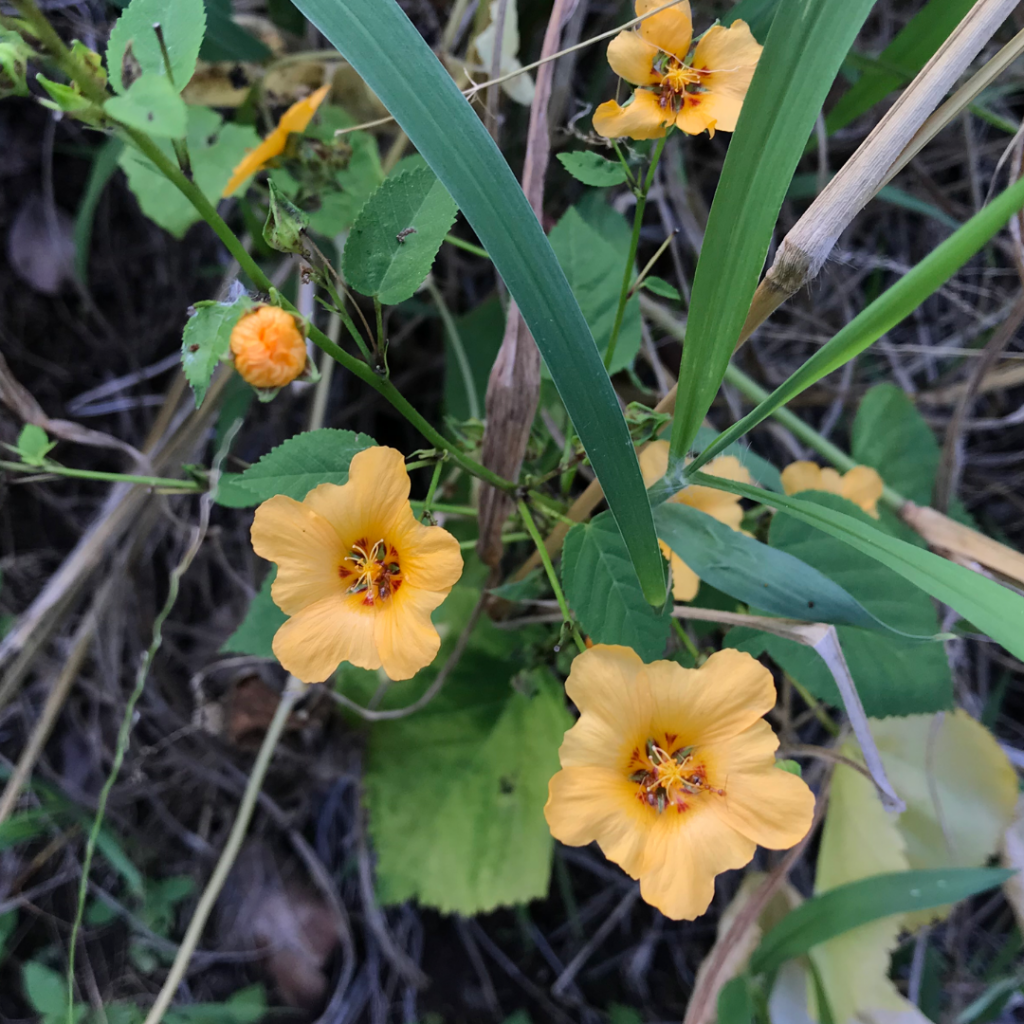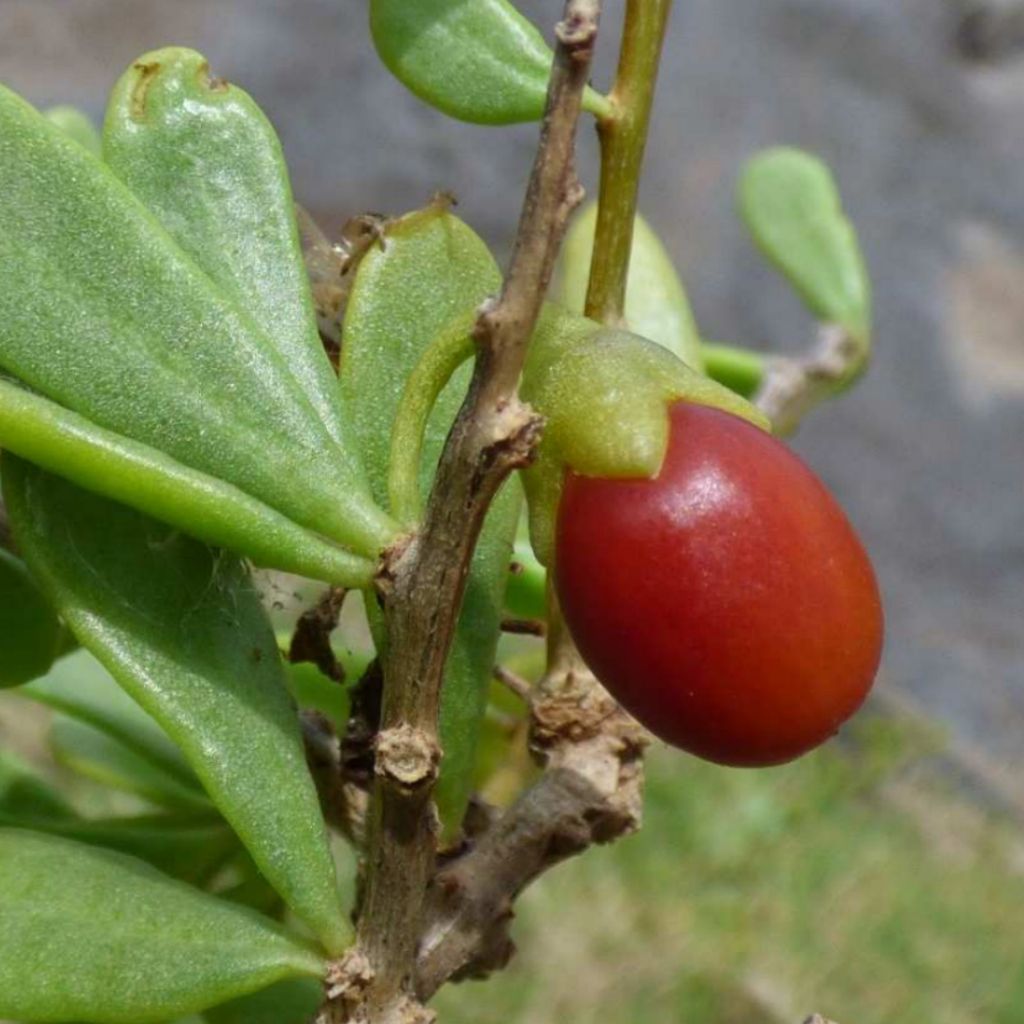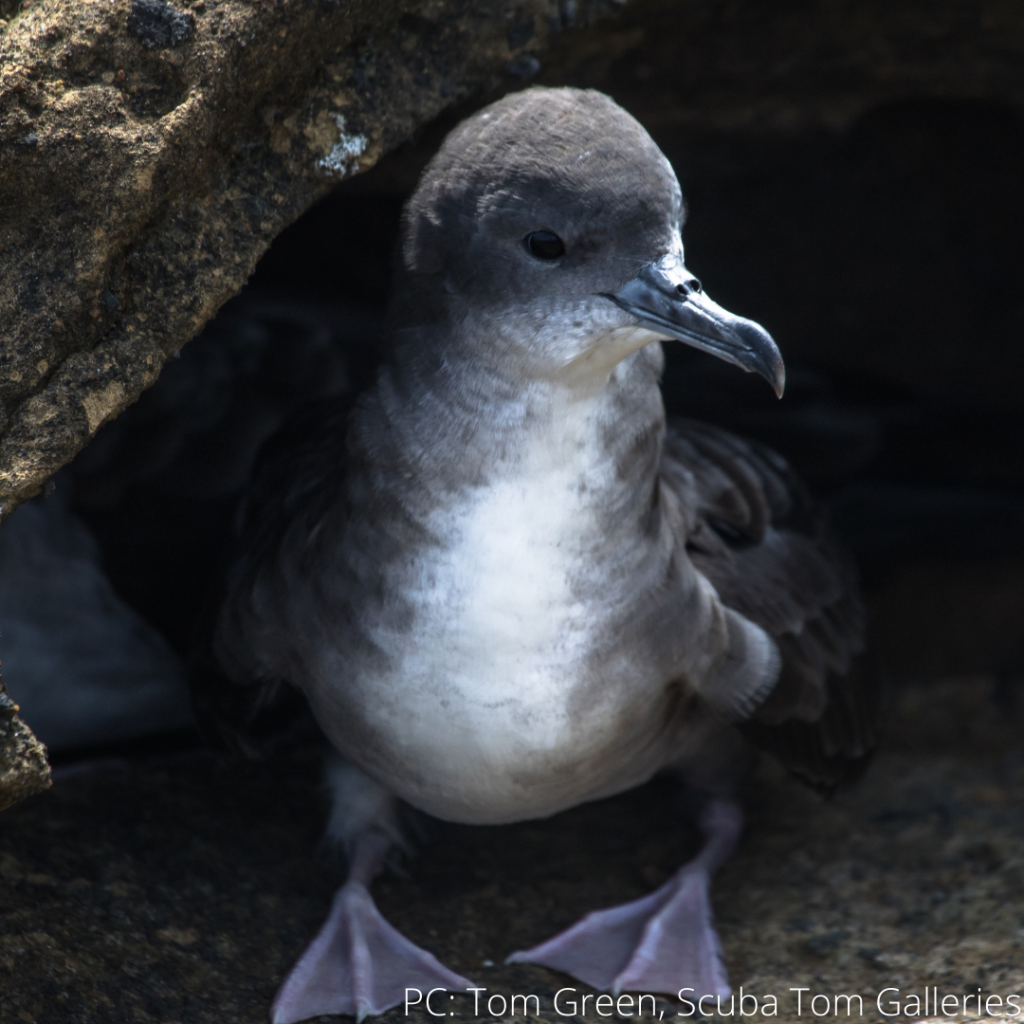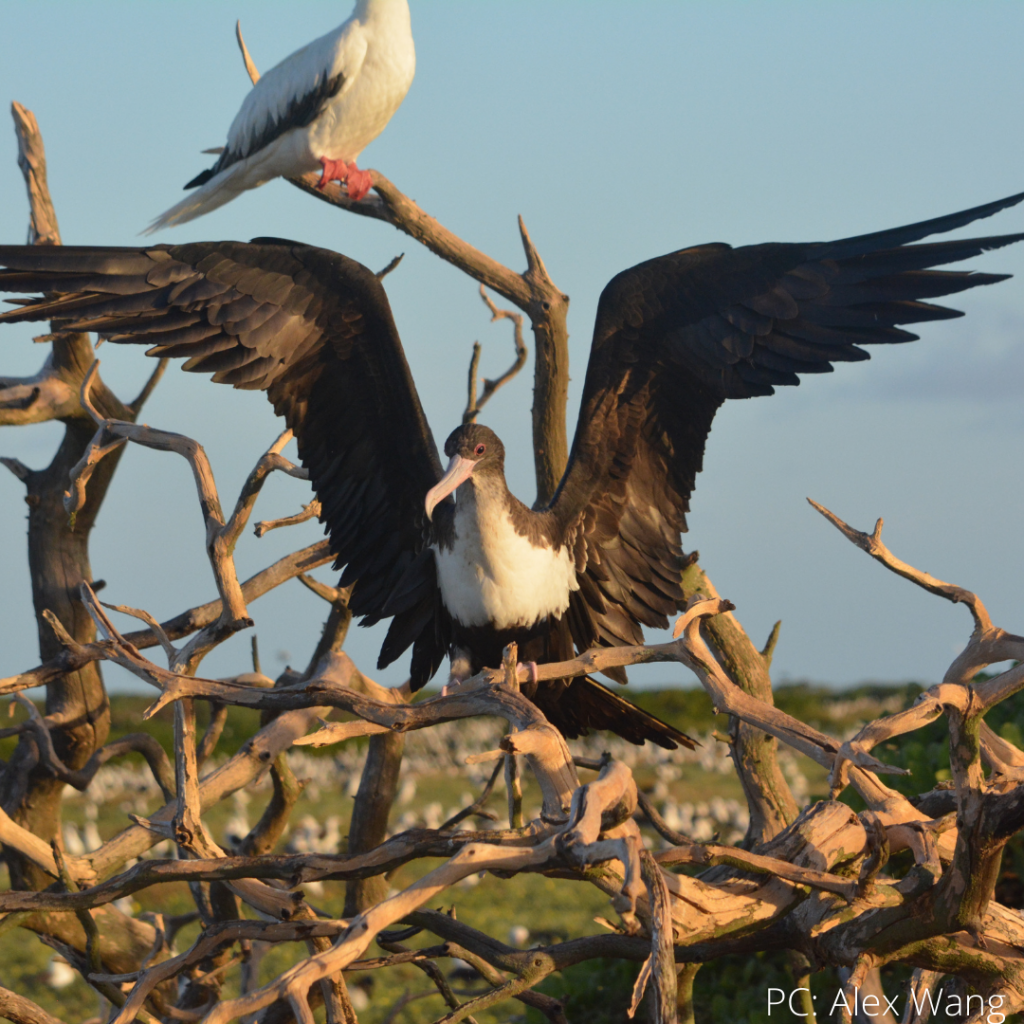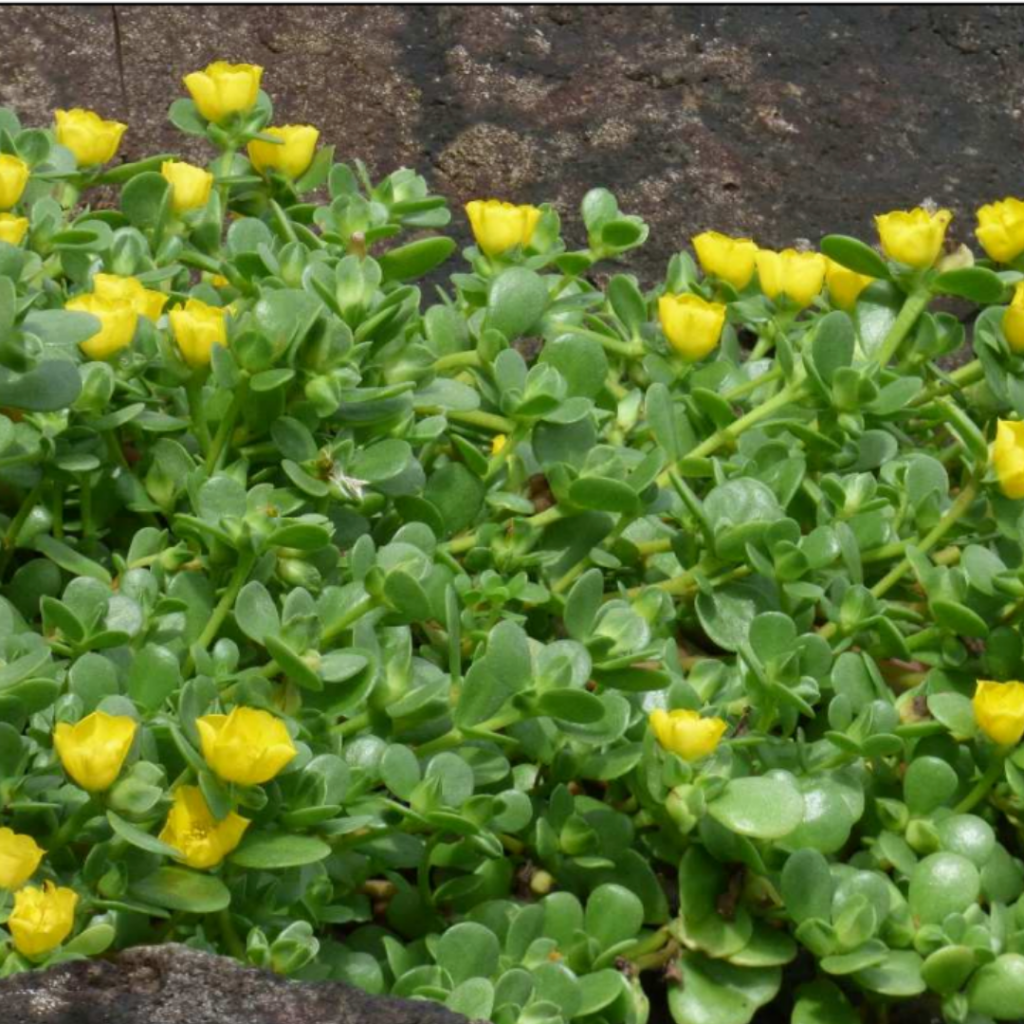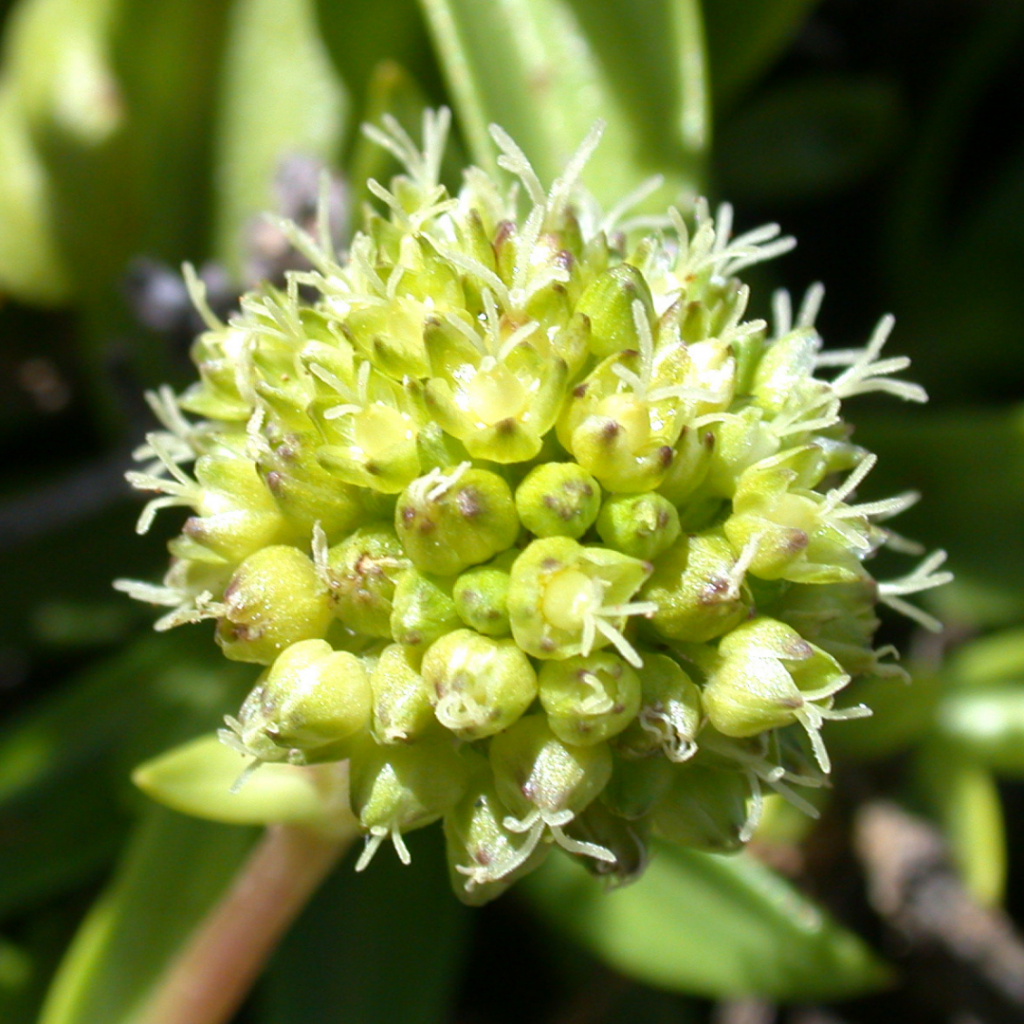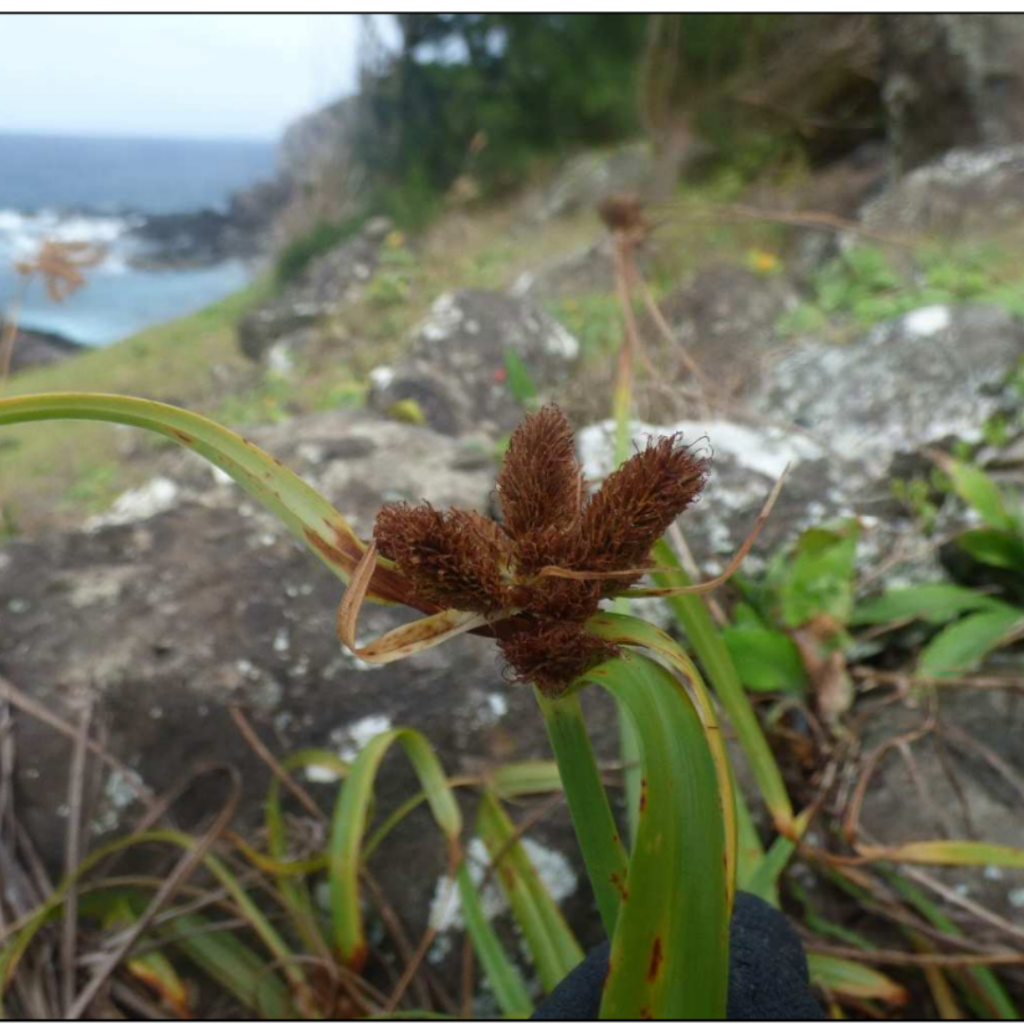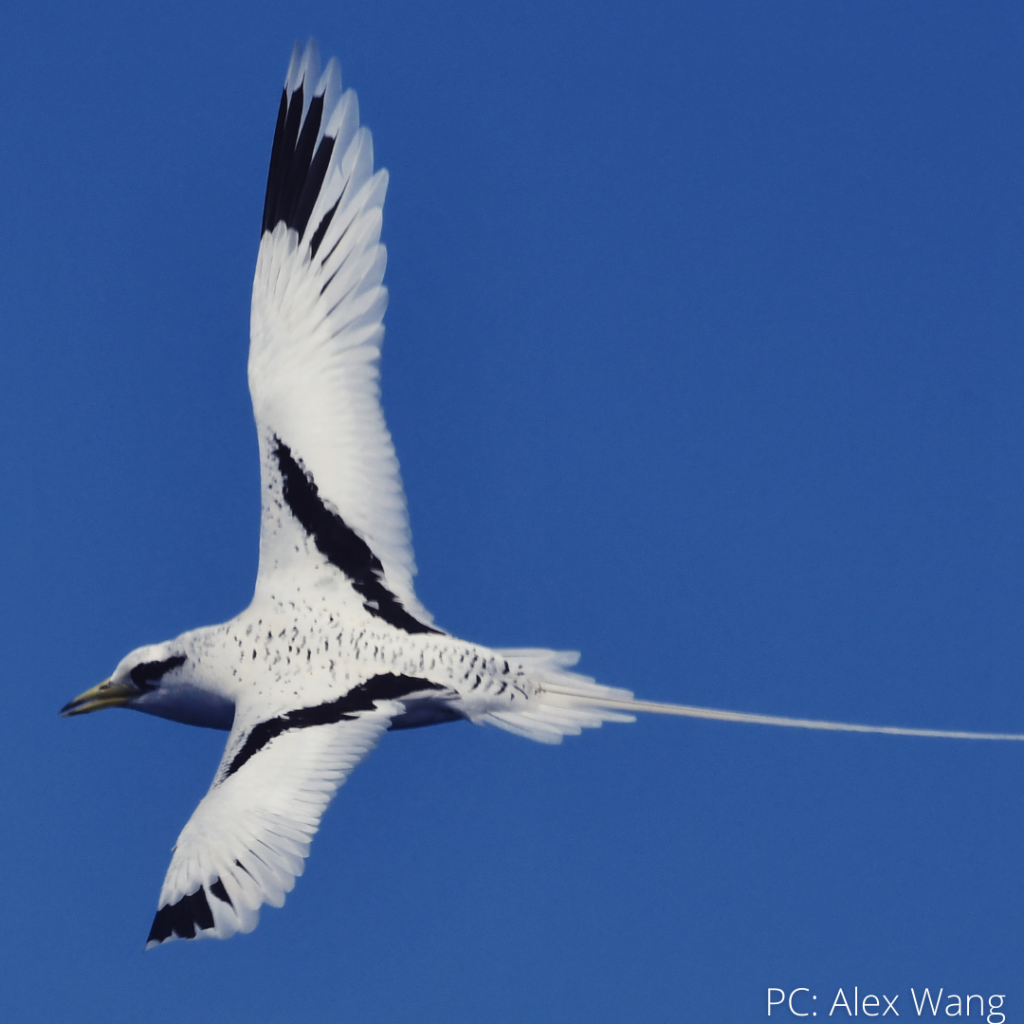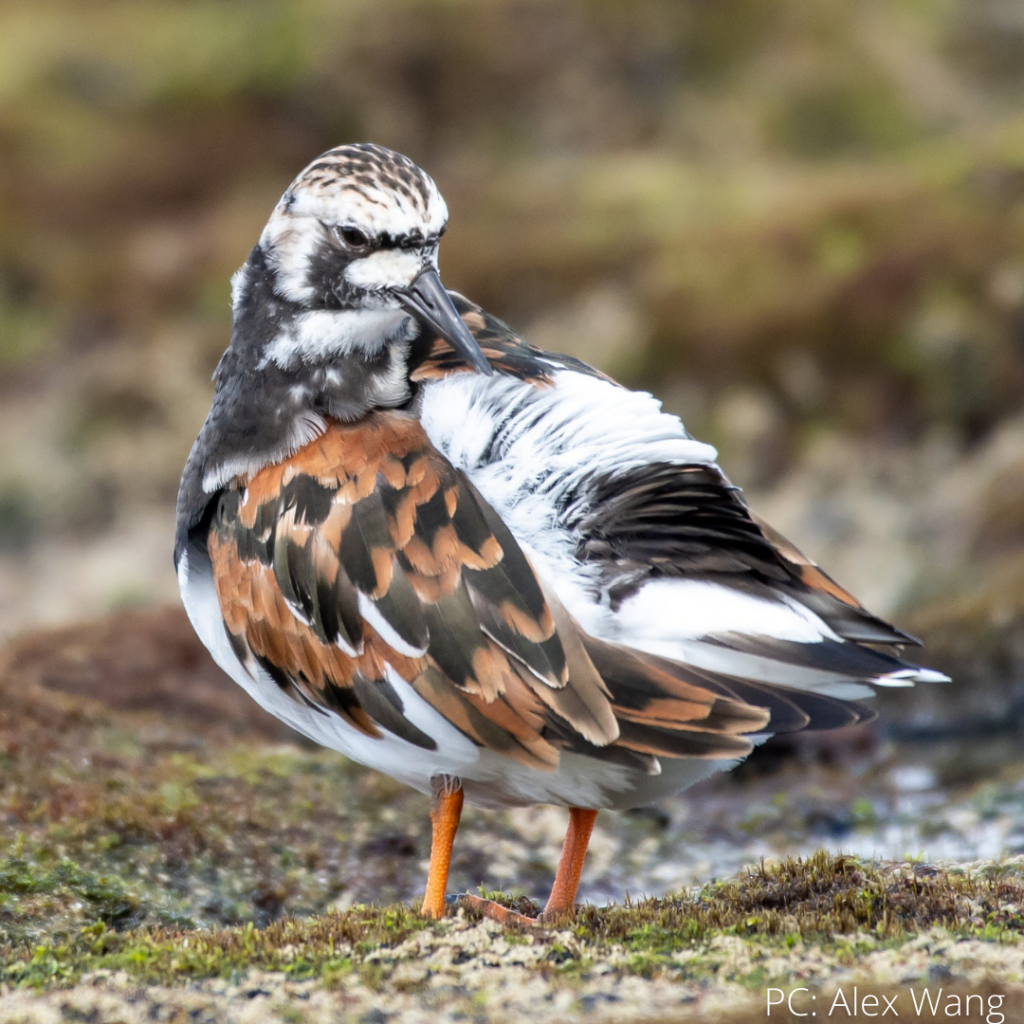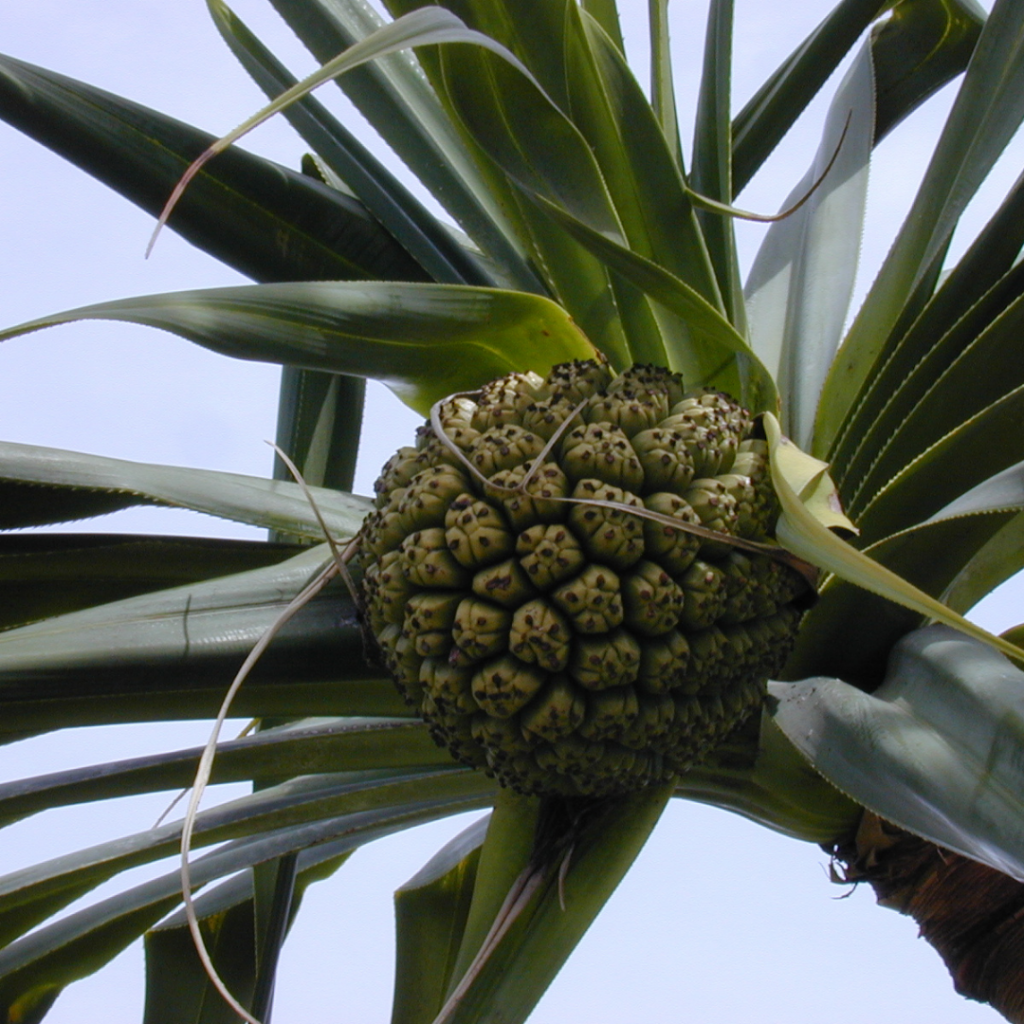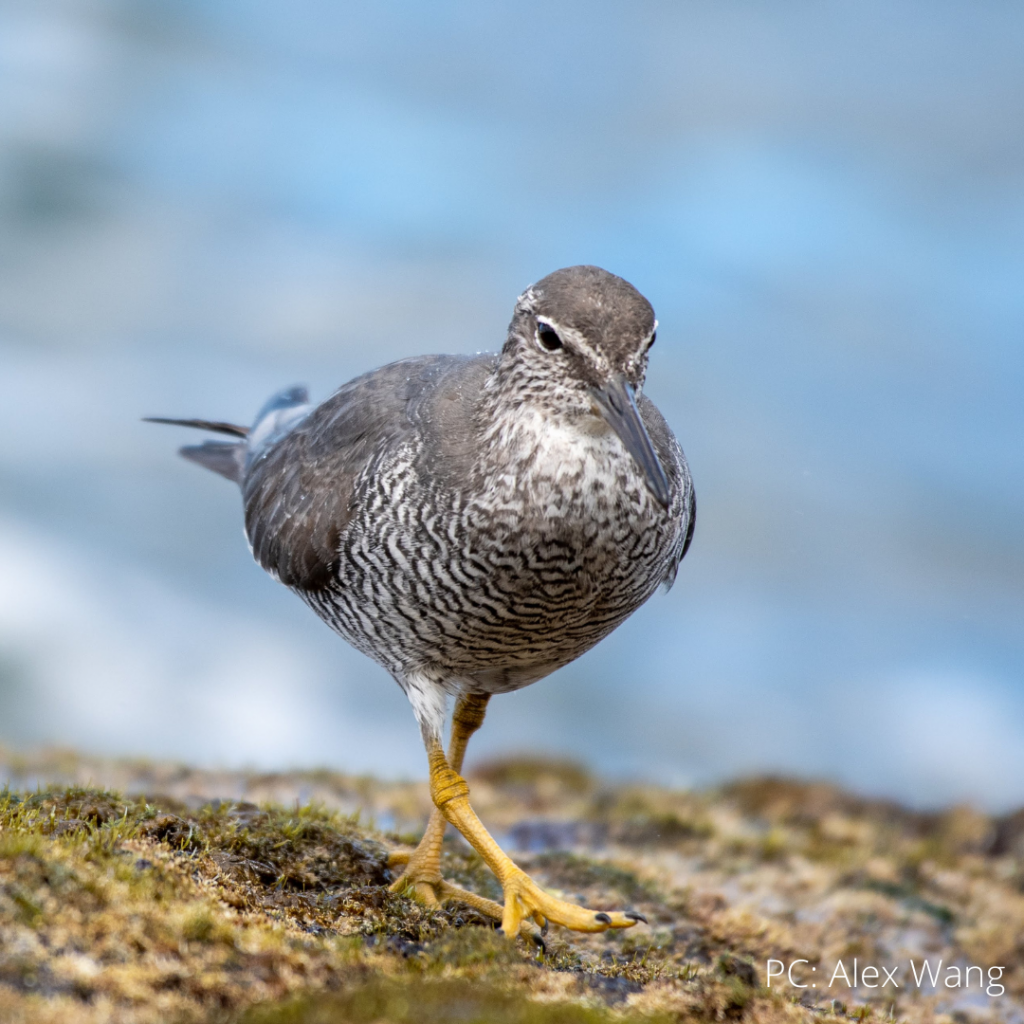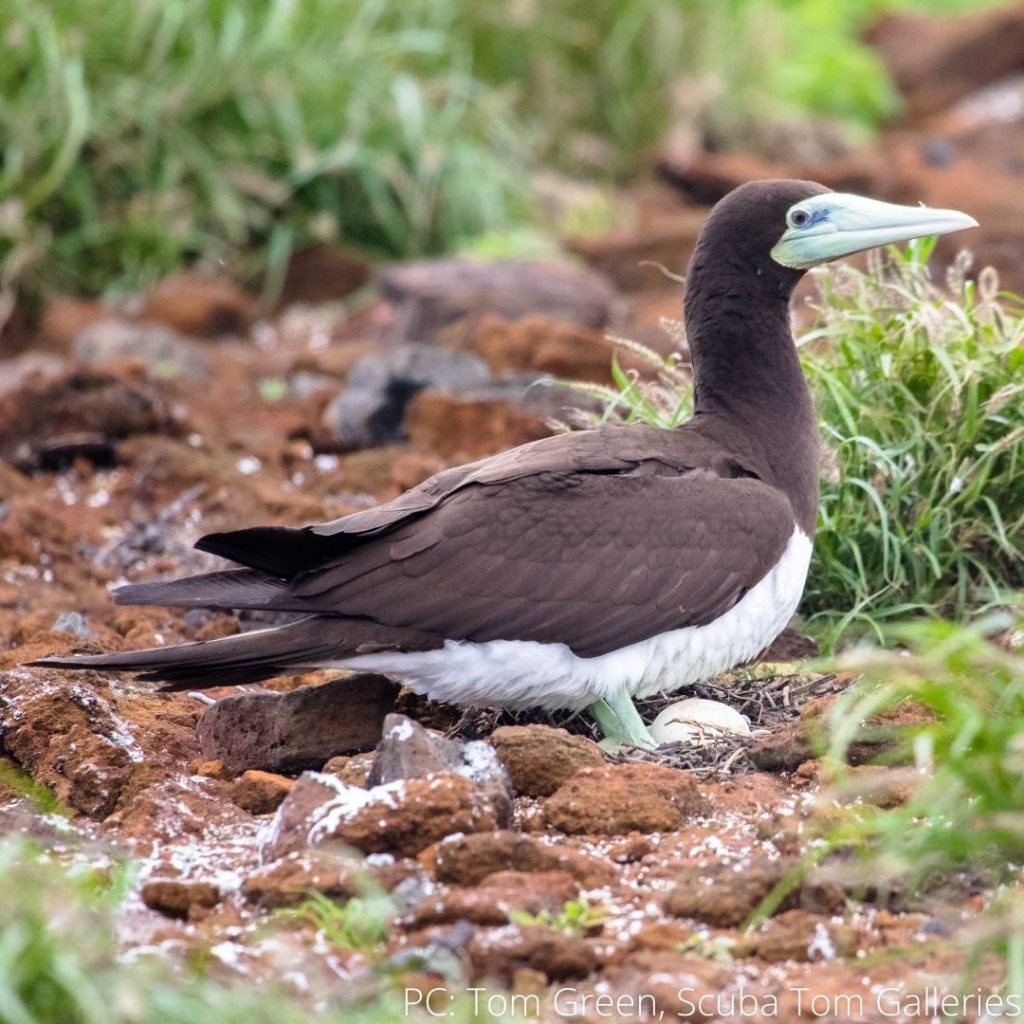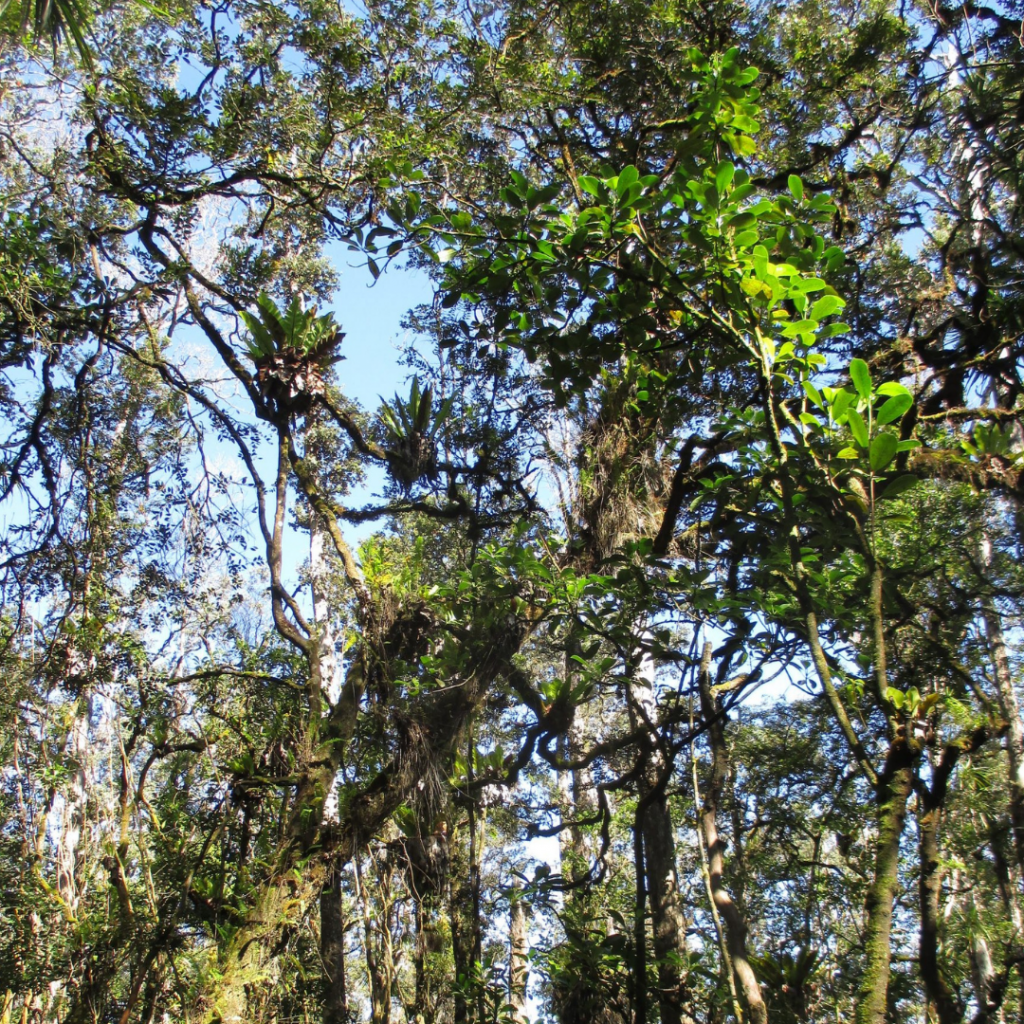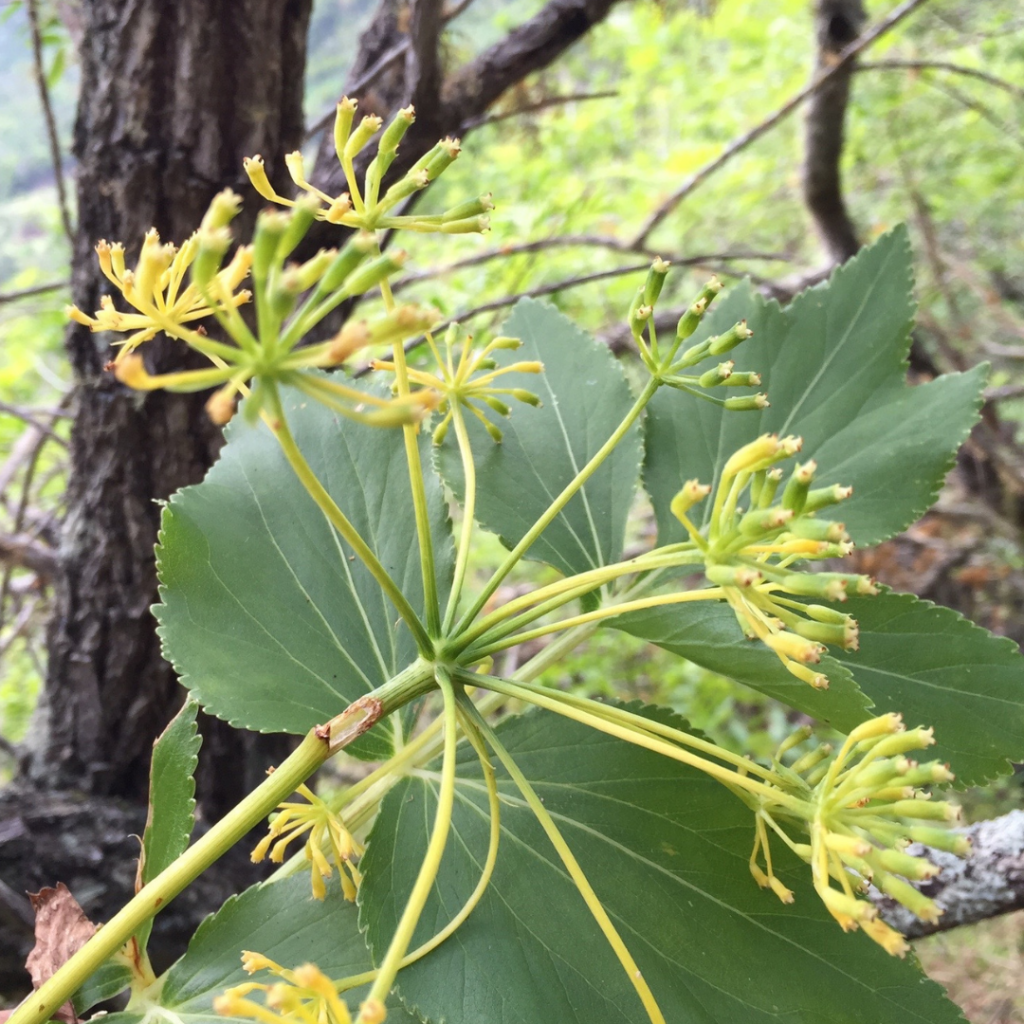Maui Offshore Islet Seabird Sanctuaries
Table of Contents
- Molokini Islet Seabird Sanctuary
- ʻAlau Island Seabird Sanctuary
- Puʻu Ku Islet Seabird Sanctuary
- Moku Mana Islet Seabird Sanctuary
- Moku Hala Seabird Sanctuary
- Keōpuka Islet Seabird Sanctuary
- Papanui O Kane Islet Seabird Sanctuary
- Mōkeʻehia Islet Seabird Sanctuary
Molokini Islet Seabird Sanctuary
Description
Molokini islet is a horseshoe shaped tuff cone of Haleakalā located about midway in the channel between the islands of Maui and Kaho‘olawe. It is approximately 22 acres and reaches a height of 160 ft. The outer slope is steep and precipitous with sparse vegetation and the inner slope is less steep and is where most of the vegetation grows. It is home to Portulaca molokiniensis, an endemic, federally listed endangered species. Harsh winds keep woody vegetation from growing no more than one or two meters. Buffel grass (Cenchrus ciliaris), dominates the islet. Near the landing are a few non-native species, such as sourgrass (Digitaria insularis) and Boerhavia (Boerhavia coccinea). Non-native portulaca species (Portulaca pilosa and Portulaca oleracea) are scattered about the islet, mostly in open areas. Also scattered about the islet are tree tobacco and koa haole. Native species, such as Pa‘ū o Hi‘iaka (Jacquemontia ovalifolia subsp. sandwicensis) and ilima (Sida fallax) are also found scattered about the islet. The diversity of plants increases in open areas not dominated by buffel grass. Along the lower portions of the islet, close to the ocean, a few native species were found, including ‘ena‘ena (Heliotropium curassavicum), ‘ākulikuli (Sesuvium portulacastrum), and ‘ōhelo kai (Lycium sandwicense). ‘Ua‘u kani (wedge-tailed shearwaters or Puffinus pacificus) are the main residents, accompanied by ‘iwa (frigate birds or Fregata minor) which are often observed soaring over the islet.
As with all state Seabird Islet Sanctuaries, visiting Molokini is prohibited. The sanctuaries are rare places where seabirds can nest with few or no predators and no large mammals (including humans) trampling and crushing the burrow where they raise their young. Turtles and seals can rest on their tiny shores without harassment and the sanctuaries are havens for native insects and plants without people constantly inadvertently bringing in weed seeds and other alien pests. Respect and admire these places through binoculars, peacefully, from shore.
Activities
No activities are possible on Molokini Islet without a permit (see below). Rules regarding activities in the waters around Molokini are regulated by the DLNR Division of Aquatic Resources (as well as relevant federal or other entities).
- To fish for, take, or possess any fish by trolling in Subzone B only.
- To possess in the water any knife and any shark billy, bang stick, powerhead, or carbon dioxide injector.
- With a permit, to engage in activities otherwise prohibited by law for scientific, propagation, or other purposes.
- To engage in commercial activities, excluding the taking of marine life, with a permit.
(Source: State of Hawaiʻi Division of Aquatic Resources)
Permits & Rules
- This sanctuary is CLOSED, per administrative rules Chapter 126 (Wildlife Sanctuaries).
- Commercial activities are prohibited.
- Other activities (like scientific research, conservation management, or subsistence, traditional, and customary practices by Native Hawaiians consistent with the long-term preservation of the wildlife sanctuary resources) may be possible with a permit. Individuals interested in permits should review the detailed information on our Permits & Guidelines page and contact their local DOFAW office.
- Rules governing activities in the waters around Molokini may fall under the DLNR Division of Aquatic Resources and users should confirm with DAR to ensure compliance. Other federal, county, or other rules may apply. In general it is prohibited:
- To fish for, take, or injure any marine life (including eggs), or possess in the water any device that may be used for the taking of marine life, except as indicated in “Permitted activities” above.
- To take or alter any sand, coral, or other geological feature or specimen, or possess in the water any device that may be used for the taking or altering of a geological feature or specimen.
- To feed or deliberately introduce any food material, substance, or attractant directly to or in the vicinity of any aquatic organism by any means or for any purpose except for trolling in Subzone B.
- To moor boats for commercial activities, except as provided for by a permit.
- To anchor boats when a day use mooring system is established by the Department.
(Source: State of Hawaiʻi Division of Aquatic Resources)
Some Native Plants & Animals
These are examples of native species associated with this site. This is not intended to be a comprehensive species inventory.
|
ʻIhi (Portulaca molokiniensis) |
Pa‘ū o Hi‘iaka (Jacquemontia ovalifolia subsp. sandwicensis) |
Nena (Heliotropium curassavicum) |
|
|
‘Ākulikuli (Sesuvium portulacastrum) |
‘Ōhelo kai (Lycium sandwicense) |
ʻAlau Island Seabird Sanctuary
Description
ʻAlau is a fairly large islet, approximately 5 acres in size and 148 ft. in height. It is located a short distance offshore south of Hāna. The islet is a cinder cone and has a central sloped section, with sheer cliffs on the south and west side, a few ridges on the east side which protrude from the central cindery section toward the sea, and a small cinder and boulder beach between the two ridges. Vegetation on ʻAlau is made up primarily of coastal plants dominated by naupaka (Scaevola taccada) and ‘ākulikuli (Sesuvium portulacastrum) with patches of nanea (Vigna marina), alena (Boerhavia repens), ‘īhi (Portulaca lutea), and schiedea (Schiedea globosa). There is a grove of about a dozen niu (coconuts or Cocos nucifera) on its summit. The west tip has some lantana (Lantana camara) with nanea and love-in-a-mist (Passiflora foetida) sprawling over the area. Just below, on the sheer west cliffs, a few rare native plants exist, including numerous schiedea and several maia pilo (Capparis sandwichiana). The slopes are predominantly naupaka and grasses including Henry’s crabgrass (Digitaria ciliaris) and wiregrass (Eleusine indica), with scattered pōpolo (Solanum americanum), pigweed (Portulaca oleracea), sow thistle (Sonchus oleraceus) and pualele (Emilia fosbergii).
The near ocean areas are blanketed with ākulikuli, alena, and ‘īhi. The rare ‘īhi (Portulaca villosa) has been found on the windswept cinder ledges on the east side along with the native sedge (Cyperus phleoides). Most of the islet is heavily burrowed by ‘ua‘u kani (wedge-tailed shearwaters or Puffinus pacificus), especially near the top of the islet. Koa‘e kea white tailed tropic birds (Phaeton lepturus dorotheae) and ‘iwa (frigatebirds or Fregata minor palmerstoni) may nest there. Many noio (black noddies or Anous minutus melanogenys) and‘akekeke (ruddy turnstones or Arenaria interpres) can be seen.
As with all state Seabird Islet Sanctuaries, visiting ‘Alau is prohibited. They are rare places where seabirds can nest with few or no predators and no large mammals (including humans) trampling and crushing the burrow where they raise their young. Turtles and seals can rest on their tiny shores without harassment and they are havens for native insects and plants without people constantly inadvertently bringing in weed seeds and other alien pests. Respect and admire these places through binoculars, peacefully, from shore.
Activities
None.
Permits & Rules
- This sanctuary is CLOSED, per administrative rules Chapter 126 (Wildlife Sanctuaries).
- Commercial activities are prohibited.
- Other activities (like scientific research, conservation management, or subsistence, traditional, and customary practices by Native Hawaiians consistent with the long-term preservation of the wildlife sanctuary resources) may be possible with a permit. Individuals interested in permits should review the detailed information on our Permits & Guidelines page and contact their local DOFAW office.
Some Native Plants & Animals
These are examples of native species associated with this site. This is not intended to be a comprehensive species inventory.
|
‘Ākulikuli (Sesuvium portulacastrum) |
‘Īhi (Portulaca lutea) |
Globe schiedea (Schiedea globosa) |
Maiapilo (Capparis sandwichiana) |
|
Native sedge (Cyperus phleoides) |
Naupaka kahakai (Scaevola taccada) |
||
Puʻu Ku Islet Seabird Sanctuary
Description
Pu‘u Ku (Pu‘u Ki‘i) Islet is located in Hāna Bay just offshore from the main island of Maui. Pu‘u Ku is about 1.3 acres in size and reaches a height of about 60 ft. Pu‘u Ku is a mix of cinders and lava flows, part of the East rift of Haleakalā, and is barely detached from the main island. The islet is covered on the west side by ironwood (Casuarina equisetifolia) with a mix of naupaka (Scaevola taccada), maia pilo (Capparis sandwichiana), and ‘ānaunau (Lepidium bidentatum var. o-waihiense) on the steep north and east sides. The summit is a mix of sourbush (Pluchea carolinensis), ‘ūlei (Osteomeles anthyllidifolia), lantana (Lantana camara), laua‘e (Phymatosorus grossus), and naupaka (Scaevola taccada). Hala (Pandanus tectorius) is found scattered about the islet. Up to a thousand ‘ua‘u kani (wedge-tailed shearwater or Puffinus pacificus) burrow under the ironwood grove on the west side of the islet. Koa‘e kea (white-tailed tropic bird or Phaeton lepturus dorotheae) may nest there. Long legged ants (Pheidole megacephala) and unfortunately, hala scale (Thysanococcus pandani) have been found there.
As with all state Seabird Islet Sanctuaries, visiting Pu‘u Ku is prohibited. They are rare places where seabirds can nest with few or no predators and no large mammals (including humans) trampling and crushing the burrow where they raise their young. Turtles and seals can rest on their tiny shores without harassment and they are havens for native insects and plants without people constantly inadvertently bringing in weed seeds and other alien pests. Respect and admire these places through binoculars, peacefully, from shore.
Activities
None
Permits & Rules
- This sanctuary is CLOSED, per administrative rules Chapter 126 (Wildlife Sanctuaries).
- Commercial activities are prohibited.
- Other activities (like scientific research, conservation management, or subsistence, traditional, and customary practices by Native Hawaiians consistent with the long-term preservation of the wildlife sanctuary resources) may be possible with a permit. Individuals interested in permits should review the detailed information on our Permits & Guidelines page and contact their local DOFAW office.
Some Native Plants & Animals
These are examples of native species associated with this site. This is not intended to be a comprehensive species inventory.
|
Maiapilo (Capparis sandwichiana) |
ʻŪlei (Osteomeles anthyllidifolia) |
||
|
Naupaka kahakai (Scaevola taccada) |
Hala (Pandanus tectorius) |
|
|
Moku Mana Islet Seabird Sanctuary
Description
Moku Mana is located east of Ke‘anae just offshore of Pauwalu Point in a cluster of basaltic sea stacks which also includes Moku Hala and Manahoa Rock. Moku Mana is a long shaped islet about 1.1 acres in size and about 65 ft. high. The lower portions are wave worn. The vegetation on the top flattish area of the islet is made up of a fairly dense low grass, herb, and shrubland. There are large patches of wiregrass (Eleusine indica), ‘ākulikuli (Sesuvium portulacastrum), and naupaka (Scaevola taccada). In between these large patches and on margins are occasional lantana (Lantana camara), christmas berry (Schinus terebinthifolius), pōpolo (Solanum americanum), ‘ihi (Portulaca lutea), pigweed (Portulaca oleracea), and pualele (Emilia fosbergii). ‘Ūlei (Osteomeles anthyllidifolia) is found on the sheer windward slopes, along with a few native sedges, including Carex wahuensis and Cyperus phleoides. ‘Ākulikuli drapes down the slopes. Additional native plants include ko‘oko‘olau (Bidens hillebrandiana subsp. polycephala), button sedge (Fimbristylus cymosa), and itchy crabgrass (Digiteria setigera).
Many seabirds can be seen nesting or resting on Moku Mana: ‘ua‘u kani (wedge-tailed shearwaters or Puffinus pacificus) on top of north islet; noio (black noddies or Anous minutus melanogenys) nest on sheer walls; ‘ūlili (Heteroscelus incanus), ‘a (brown boobies or Sula leucogaster plotus), and ‘iwa (frigatebirds or Fregata minor palmerstoni) also frequent the islet.
Invertebrates on the northern vegetated side include: honey bee (Apis melifera); native naupaka moths (Udea littorea), Hyleus bees, and Hawaiian beet webworms (Spolodea recurvalis). Aliens have found the islet such as crazy ants (Paratrechina longicornis), praying mantis, and Tornatellid snails (Tornatellides sp.).
As with all state Seabird Islet Sanctuaries, visiting Moku Mana is prohibited. They are rare places where seabirds can nest with few or no predators and no large mammals (including humans) trampling and crushing the burrow where they raise their young. Turtles and seals can rest on their tiny shores without harassment and they are havens for native insects and plants without people constantly inadvertently bringing in weed seeds and other alien pests. Respect and admire these places through binoculars, peacefully, from shore.
Activities
None.
Permits & Rules
- This sanctuary is CLOSED, per administrative rules Chapter 126 (Wildlife Sanctuaries).
- Commercial activities are prohibited.
- Other activities (like scientific research, conservation management, or subsistence, traditional, and customary practices by Native Hawaiians consistent with the long-term preservation of the wildlife sanctuary resources) may be possible with a permit. Individuals interested in permits should review the detailed information on our Permits & Guidelines page and contact their local DOFAW office.
Some Native Plants & Animals
These are examples of native species associated with this site. This is not intended to be a comprehensive species inventory.
|
‘Ākulikuli (Sesuvium portulacastrum) |
‘Īhi (Portulaca lutea) |
ʻŪlei (Osteomeles anthyllidifolia) |
Native sedge (Cyperus phleoides) |
|
Naupaka kahakai (Scaevola taccada) |
|||
|
|
|
 Moku Hala Seabird Sanctuary
Moku Hala Seabird Sanctuary
Description
Moku Hala is a narrow, steep pyramid shaped columnar basalt rock located west of Moku Mana near Pauwalu Pt., Maui. It’s just 0.2 acres in size and about 55 ft high. The southern side and upper portions of the rock are covered mostly by naupaka (Scaevola taccada) with occasional patches of grass (Digitaria spp.) and sedges (Carex wahuensis). ‘Ākulikuli (Sesuvium portulacastrum) is found lowest/closest to ocean. Wave action prevents plants from growing on the northern side and lower portions.
As with all state Seabird Islet Sanctuaries, visiting Moku Hala is prohibited. They are rare places where seabirds can nest with few or no predators and no large mammals (including humans) trampling and crushing the burrow where they raise their young. Turtles and seals can rest on their tiny shores without harassment and they are havens for native insects and plants without people constantly inadvertently bringing in weed seeds and other alien pests. Respect and admire these places through binoculars, peacefully, from shore.
Activities
None.
Permits & Rules
- This sanctuary is CLOSED, per administrative rules Chapter 126 (Wildlife Sanctuaries).
- Commercial activities are prohibited.
- Other activities (like scientific research, conservation management, or subsistence, traditional, and customary practices by Native Hawaiians consistent with the long-term preservation of the wildlife sanctuary resources) may be possible with a permit. Individuals interested in permits should review the detailed information on our Permits & Guidelines page and contact their local DOFAW office.
Some Native Plants & Animals
These are examples of native species associated with this site. This is not intended to be a comprehensive species inventory.
|
‘Ākulikuli (Sesuvium portulacastrum) |
Naupaka kahakai (Scaevola taccada) |
 Keōpuka Islet Seabird Sanctuary
Keōpuka Islet Seabird Sanctuary
Description
Keōpuka is a long steep narrow islet about 2 acres in size and 120 ft. tall with a knifelike ridge running through the center, located off the coast of east Maui just west of Honomanū. Itʻs heavily vegetated. Native plants include ‘ūlei (Osteomeles anthyllidifolia) growing on the narrow ridge top, with two lama (Diospyros sandwicenis). A thick tangle of christmas berry (Schinus terebinthifolius), hala (Pandanus tectorius), lantana (Lantana camara) and two young Port Jackson figs (Ficus cf. platypoda) battle for space. Scattered under the canopy are laua‘e (Phymatosorusgrossus). The sides of sheer slopes are slightly less vegetated and include naupaka (Scaevola taccada), native sedges (Cyperus phleoides and Carex wahuensis) and other species, such as makou (Peucedanum sandwicense) found closer to the upper portions of sheer walls and ‘ākulikuli (Sesuvium portulacastrum) closer to the lower wave worn sections. Numerous nest burrows show the islet is home to ‘ua‘u kani (wedge-tailed shearwaters, Puffinus pacificus) and native insects.
As with all state Seabird Islet Sanctuaries, visiting Keōpuka is prohibited. They are rare places where seabirds can nest with few or no predators and no large mammals (including humans) trampling and crushing the burrow where they raise their young. Turtles and seals can rest on their tiny shores without harassment and they are havens for native insects and plants without people constantly inadvertently bringing in weed seeds and other alien pests. Respect and admire these places through binoculars, peacefully, from shore.
Activities
None.
Permits & Rules
- This sanctuary is CLOSED, per administrative rules Chapter 126 (Wildlife Sanctuaries).
- Commercial activities are prohibited.
- Other activities (like scientific research, conservation management, or subsistence, traditional, and customary practices by Native Hawaiians consistent with the long-term preservation of the wildlife sanctuary resources) may be possible with a permit. Individuals interested in permits should review the detailed information on our Permits & Guidelines page and contact their local DOFAW office.
Some Native Plants & Animals
These are examples of native species associated with this site. This is not intended to be a comprehensive species inventory.
|
ʻŪlei (Osteomeles anthyllidifolia) |
Native sedge (Cyperus phleoides) |
Makou (Peucedanum sandwicense) |
|
|
‘Ākulikuli (Sesuvium portulacastrum) |
Hala (Pandanus tectorius) |
Naupaka kahakai (Scaevola taccada) |
Papanui O Kane Islet Seabird Sanctuary
Description
Papanui O Kane Islet Seabird Sanctuary is a 2-acre small islet off the coast of Haiku, Maui. This islet is one of six seabird sanctuary islets that is protected by the Division of Forestry and Wildlife (DOFAW). Unlike the other islets, Papanui O Kane has no vegetation and is often washed over the waves from high surf. As a result, this islet would be expected to have less seabird activity compared to other seabird sanctuary islets. Due to Papanui O Kane’s status as a seabird sanctuary, it is closed to the public.
Activities
None.
Permits & Rules
- This sanctuary is CLOSED, per administrative rules Chapter 126 (Wildlife Sanctuaries).
- Commercial activities are prohibited.
- Other activities (like scientific research, conservation management, or subsistence, traditional, and customary practices by Native Hawaiians consistent with the long-term preservation of the wildlife sanctuary resources) may be possible with a permit. Individuals interested in permits should review the detailed information on our Permits & Guidelines page and contact their local DOFAW office.
Some Native Animals
Animal information for our DOFAW-managed areas will be coming soon.
Mōkeʻehia Islet Seabird Sanctuary
Description
Mōkeʻehia Islet Seabird Sanctuary is a relatively large islet, about 6.5 acres in size, rising to about 160 ft. in height, near the coast of West Maui just south of Puʻu Koaʻe, Kahakuloa. Several hundred ʻuaʻu kani (Wedge-tailed Shearwater, Puffinus pacificus) burrow into the steep cliff wall of the islet. It is also home to native wasps, bees, Hawaiian Wolf Spiders and Beet Webworms (Spolodea recurvalis). It has ten native plant specie including: patches of aweoweo (Chenopodium oahuense), ʻūlei (Osteomeles anthyllidofilia), and ʻilima (Sida fallax), with ʻōhelo kai (Lycium sandwicence) cascading down the steep walls. Native plants at the coast include ʻākulikuli (Sesuvium portulacastrum), nena (Heliotropium curasssavicum), Panic Grass (Panicum faurei), and ʻakoko (Chamaescyce celastroides var. amplectens).
As with all state Seabird Islet Sanctuaries, visiting Mōkeʻehia is prohibited. They are rare places where seabirds can nest with few or no predators and no large mammals (including humans) trampling and crushing the burrow where they raise their young. Turtles and seals can rest on their tiny shores without harassment and they are heavens for native insects and plants without people constantly inadvertently bringing in weed seeds and other alien pests. Respect and admire these place through binoculars peacefully, from shore.
Activities
None.
Permits & Rules
- This sanctuary is CLOSED, per administrative rules Chapter 126 (Wildlife Sanctuaries).
- Commercial activities are prohibited.
- Other activities (like scientific research, conservation management, or subsistence, traditional, and customary practices by Native Hawaiians consistent with the long-term preservation of the wildlife sanctuary resources) may be possible with a permit. Individuals interested in permits should review the detailed information on our Permits & Guidelines page and contact their local DOFAW office.
Some Native Plants & Animals
These are examples of native species associated with this site. This is not intended to be a comprehensive species inventory.
|
ʻŪlei (Osteomeles anthyllidifolia) |
‘Ōhelo kai (Lycium sandwicense) |
‘Ākulikuli (Sesuvium portulacastrum) |
|
|
Nena (Heliotropium curassavicum) |
|
|





